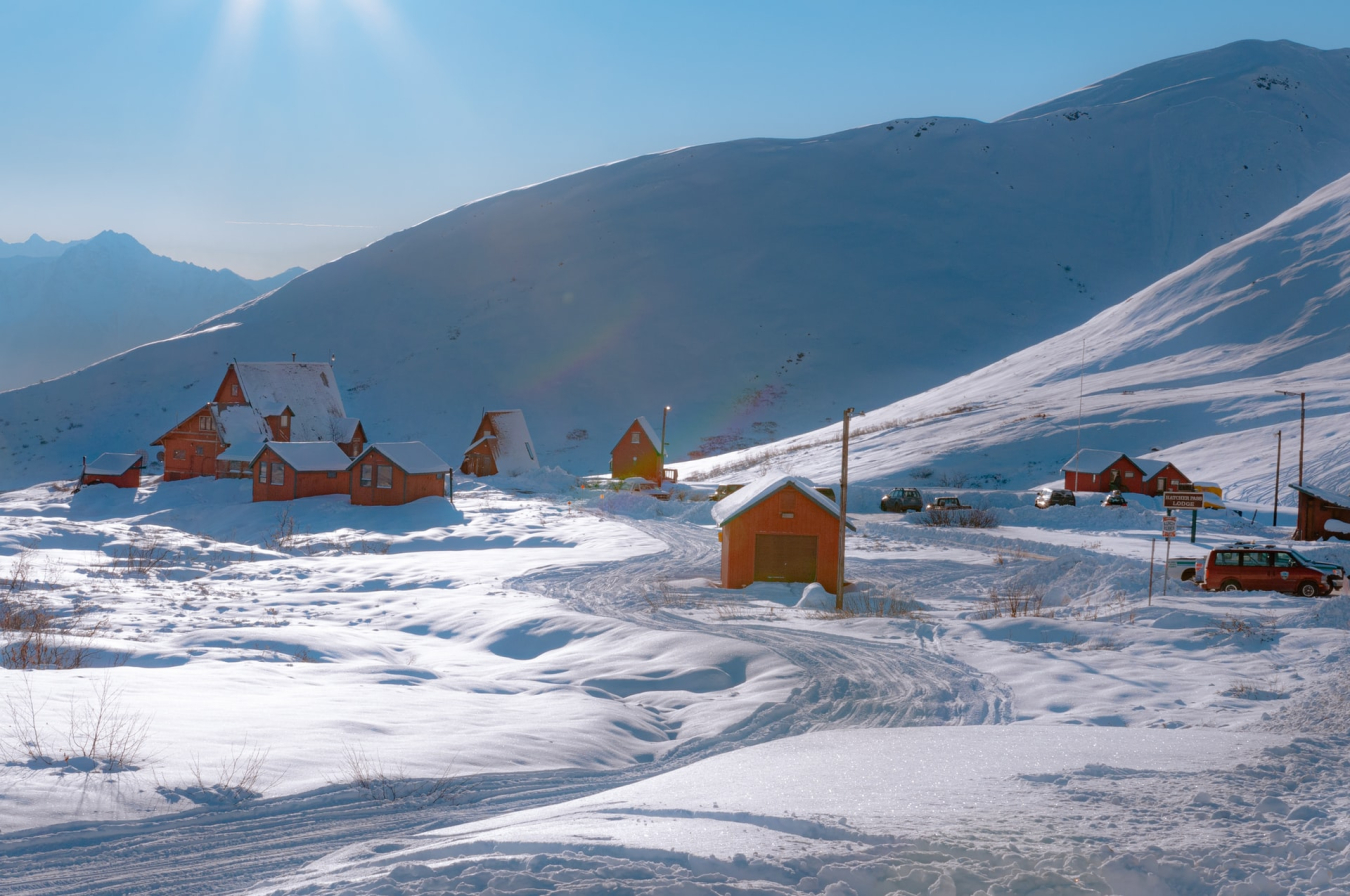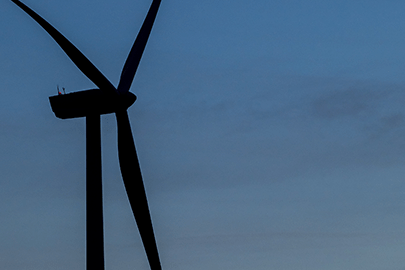A standalone wind turbine is transforming the rural Alaskan community of St. Mary’s, according to a new study conducted by Pacific Northwest National Laboratory and Sandia National Laboratories.
Wind Energy Technologies Office
May 16, 2022Distributed wind assessment of remote Alaskan village reveals significant projected cost savings
A study of the value of distributed wind energy in a remote area of Alaska shows that the standalone wind turbine installed for a rural community provides significant economic and climate benefits, indicating that other remote communities could also achieve similar beneficial results from wind energy.
The study, conducted by a research team from Pacific Northwest National Laboratory (PNNL) and Sandia National Laboratories and published in the journal Energies, centered around distributed wind energy—meaning wind turbines that power nearby individual homes, businesses, and communities—in the tiny western Alaskan village of St. Mary’s.
Nearly 700 people make up the St. Mary’s, Alaska, community. The village historically receives electricity from a diesel power plant, which also serves two other small villages, Pitka’s Point and Mountain Village. The electric microgrids of the three villages are connected to each other but isolated from outside transmission systems. Diesel, however, is expensive and challenging to deliver to remote Alaskan villages due to transportation, logistical, and weather challenges.
In 2019, a 900-kilowatt standalone wind turbine was erected in Pitka’s Point, which serves all three communities. The turbine helps provide electricity flow to the St. Mary’s microgrid to power homes and other buildings in the village. Alaska Village Electric Cooperative—or AVEC—owns and operates both the diesel power plant and the wind turbine. The turbine was partially funded through a 2016 U.S. Department of Energy (DOE) Office of Indian Energy grant to the AVEC/Pitka’s Point Native Corporation Renewable Energy Joint Venture.

A study of distributed wind energy in a remote Alaskan community reveals how similar communities could benefit from this source of renewable energy.
With the support of DOE's Wind Energy Technologies Office, the research team used a PNNL-developed framework to evaluate the benefits and costs of this distributed wind energy project for different stakeholders. In this case, they considered the impact to AVEC, as well as the village’s residents, the state of Alaska, and the world at large.
The team discovered that AVEC could avoid $5.3 million in expected diesel costs over the lifetime of the turbine as the wind energy partially displaces diesel generation.
“When looking from a societal perspective, there’s also tremendous benefit to the environment with a decrease in carbon dioxide emissions from diesel use, which is valued at almost $2 million from avoiding long-term damage to health, property, and more,” said PNNL economist Sarah Barrows, who led the study.
Adds Barrows, “We also found that construction, as well as operations and maintenance over the distributed wind energy project’s lifetime, translated into an estimated $7 million in economic benefits within the state of Alaska. The economic impact from spending on construction, operations, and maintenance combined was by far the largest overall benefit to society, as the project created jobs and contributed to economic growth in the state.”
The team noted that other sources of funding, such as incentives, awards, and subsidies, can help utilities, like AVEC, reduce often-insurmountable upfront costs. The several million dollars in total estimated societal benefits—which are separate from the estimated benefits to AVEC—far outweighed St. Mary’s project cost to the public in terms of federal and state awards to install the turbine, illustrating the return on investment of public funding.
Results of the study provide information that can help utilities, such as AVEC, as well as federal and state lawmakers make sound decisions about installing distributed wind turbines to support other villages’ remote microgrid systems.
The PNNL team will focus future efforts on other aspects of distributed wind energy in remote communities, including resilience and environmental justice impacts; as well as economics of potential hybrid systems that use wind energy, solar power, and energy storage to support remote communities.
This research is part of PNNL’s growing valuation analysis research.
Subscribe to the WETO e-newsletter to stay informed on the latest wind energy news, events, publications, and updates.







